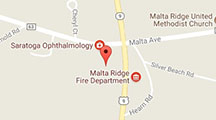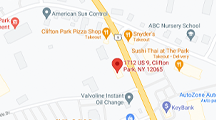Posts by Saratoga Opthalmology:
Week in review: AMD video game, RNFL thinning linked to diabetes and hypertension, safer IOP measurement
This week, a new video game aids in AMD detection, thinner RNFL thickness is seen in patients with both diabetes and hypertension, and safer options for conducting in-person IOP measurements are reviewed. Source: AAO
- Posted on: Feb 14 2022
- Leave a reponse
Increasing incidence of divergence insufficiency esotropia linked to progressive addition lenses
A review of cases from a single practice in the United States was conducted to determine the incidence of divergence insufficiency (DI) esotropia over a 41-year period. Source: AAO
- Posted on: Feb 10 2022
- Leave a reponse
Pediatric ophthalmologists remain skeptical about ongoing telemedicine use
Investigators compared telemedicine utilization among pediatric ophthalmologists in the United States at the beginning of the COVID-19 pandemic and several months into the pandemic. Source: AAO
- Posted on: Feb 9 2022
- Leave a reponse
FYB201, a ranibizumab biosimilar, demonstrates equivalent efficacy
COLUMBUS-AMD is a multicenter, parallel-group, 48-week phase III clinical trial that assessed the equivalence of FYB201, a candidate biosimilar for ranibizumab, with reference ranibizumab. Source: AAO
- Posted on: Feb 9 2022
- Leave a reponse
Use of topical ocular antihypertensives may lead to dacryocystorhinostomy failure
A recent retrospective study assessed whether the use of topical ocular antihypertensives affected outcomes of dacryocystorhinostomy (DCR) with intubation. Source: AAO
- Posted on: Feb 9 2022
- Leave a reponse
Retinal tears and detachments are among the late complications of acute PVD
Retrospective data from patients enrolled in a large US healthcare system were used to evaluate rates of complicated acute posterior vitreous detachment (PVD). Source: AAO
- Posted on: Feb 8 2022
- Leave a reponse
In children, risk of diabetic retinopathy is higher in type 2 disease than type 1
A retrospective, population-based review conducted over 50 years in a single county in the United States evaluated the risk of developing diabetes-associated ocular complications (DAOC) in children diagnosed with either type 1 or type 2 diabetes. Source: AAO
- Posted on: Feb 7 2022
- Leave a reponse
Outcomes seen with enhanced monofocal and EDOF IOLs are comparable
Investigators in Italy used a nonrandomized prospective comparative case series to compare visual outcomes with monofocal, enhanced monofocal, and extended depth-of-focus (EDOF) IOLs. Source: AAO
- Posted on: Feb 7 2022
- Leave a reponse
Stapled peptides may block HSV-1 infection in primary corneal epithelial cells
A group of stapled peptides was designed to disrupt viral DNA synthesis by mimicking a structure of the herpes simplex virus-1 (HSV-1) polymerase. African green monkey kidney epithelial cells were cultured and treated with unstapled and stapled peptides, and blocking of HSV-1 DNA synthesis and infection were assessed. Source: AAO
- Posted on: Feb 7 2022
- Leave a reponse
Recurrence of neovascular AMD is common when treatment is suspended
Investigators in Sweden conducted a prospective cohort study to evaluate recurrence of active macular revascularization and visual outcomes in patients who previously underwent anti-VEGF treatment for neovascular AMD. Source: AAO
- Posted on: Feb 4 2022
- Leave a reponse
Quick Links
Expertise
Our Locations
658 Malta Ave, Suite 101
Malta, NY 12020
Tel: 518-580-0553
Get Directions »
2200 Burdett Avenue, Suite 206
Troy, New York 12180
Tel: 518-580-0553
Get Directions »
1712 Route 9,
Halfmoon, NY 12065
Tel: +1 (518) 580-0553
Get Directions »



